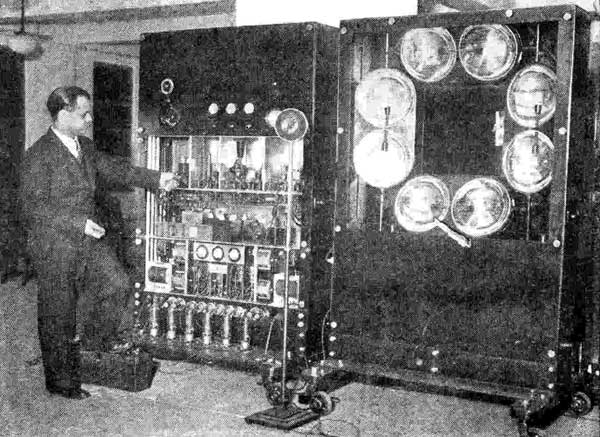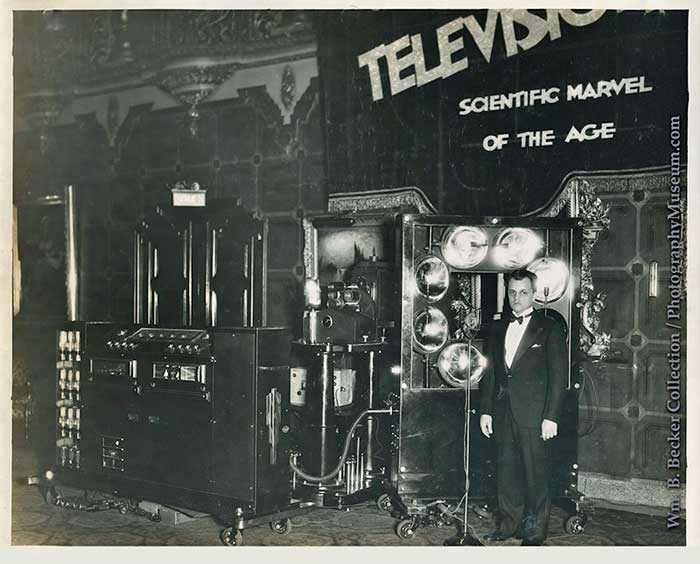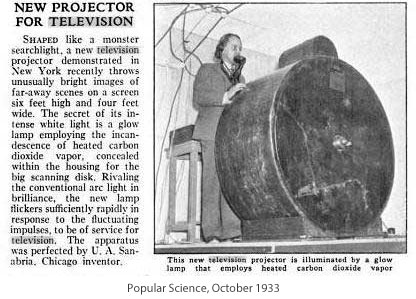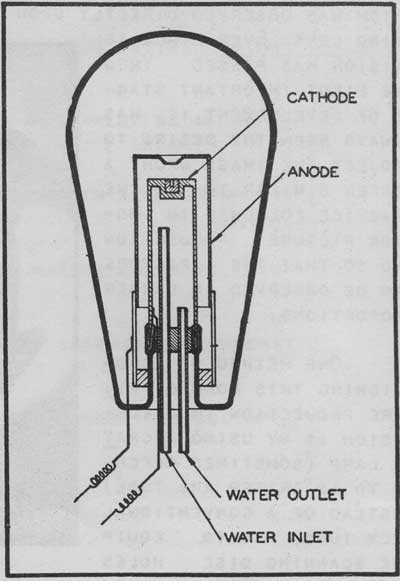Mechanical Television Sanabria System
In 1931 the Western Television Corp. developed a theater projection system and demonstrated it around the country in 1933. The following is from Peter Yanczer:
Courtesy of The American Museum of Photography
After the Western company closed its doors in 1933, Ulises Sanabria worked on a multichannel projection system. According to Bill Parker, an engineer with the company, there were multiple crater lamps, each illuminating a group of lines in the picture, resulting in a 120 or 150 line image on a screen up to 30 feet wide. The equipment was made by a company in Canada that built municipal water towers. The crater lamps were mounted on a copper strip. The following is from a publication by Manuel A. Martinez, quoting a document written by U.A. Sanabria in 1966:
A 1936 brochure from National Schools in Los Angeles has a diagram of a water cooled crater lamp, designed to be used in projection systems:
|





